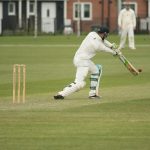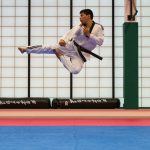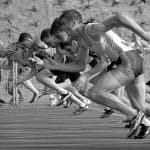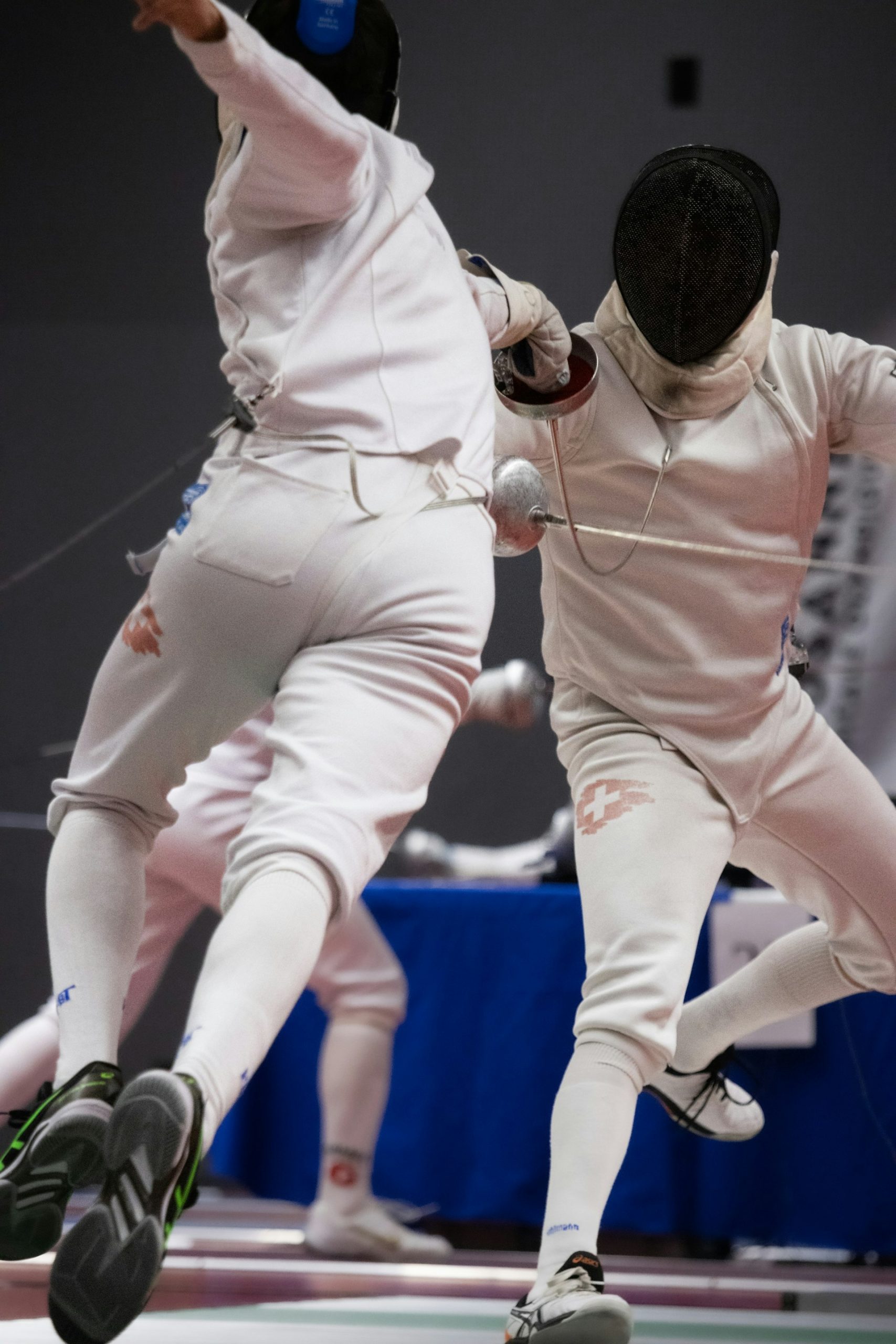The sport of fencing is a complex, fast-paced battle where every millisecond and millimeter counts. In such a competitive arena, athletes are always looking for an edge. One area that has emerged as a crucial determinant of performance is vision training. This piece delves into the role of vision training in the performance of UK fencing athletes, highlighting its influence on the athletes’ performance and the relevance of this training in a sport predicated on precision and speed.
The Core Elements of Fencing
Before dissecting the influence of vision training on fencing, it’s essential to understand the basics of the sport. Fencing is a dynamic and challenging sport that requires a combination of skill, speed, agility, and strategy. A key feature is the ability to anticipate an opponent’s move and respond swiftly and accurately. Fencers must be able to interpret, forecast, and react to an opponent’s actions within an incredibly short time frame, often a mere fraction of a second.
Cela peut vous intéresser : What strategies do UK kickboxers use to optimize their bout pacing?
In a study published in the Journal of Sports Sciences, elite fencers were found to have faster reaction times and better anticipation skills than non-elite fencers. This ability to quickly perceive and interpret an opponent’s actions and intentions was directly linked to their level of visual acuity and visual recognition speed, skills honed through vision training.
Vision Training in Fencing
So what exactly does vision training entail in fencing? It involves a range of exercises and drills designed to improve the visual abilities that are crucial in the sport. These include, but are not limited to, visual reaction time, hand-eye coordination, depth perception, and peripheral vision.
En parallèle : How can UK combat sports athletes manage chronic pain without relying on medication?
A study from the University of Birmingham, accessible on Google Scholar, found that vision training for fencers can improve their ability to anticipate an opponent’s actions, based on the movement of their body and weapon. The study’s data suggested that vision training could lead to faster, more accurate responses in a fencing bout, giving the fencer an advantage over their opponent.
The Impact of Vision Training on Fencing Performance
This leads us to the crux of the matter – the impact of vision training on fencing performance. It’s a topic that has been explored in numerous studies, with data typically gathered from elite athletes in the sport.
In an analysis conducted by Sports Performance Analysis Journal, the benefits of vision training in fencing were clearly illustrated. The study found that fencers who engaged in regular vision training had significantly improved reaction times and accuracy in their attacks and parries, compared to those who did not undertake any vision training.
Research available on Crossref also supports this. A study tracked the performance of a group of fencers over a six-month period. Half the group participated in regular vision training, while the other half did not. The fencers who undertook vision training demonstrated a clear improvement in their fencing performance, particularly in their ability to anticipate and respond to their opponent’s actions.
Vision Training as Part of Holistic Training
Although the positive impact of vision training on fencing performance is considerable, it should not be viewed as a stand-alone solution. Elite fencers require a comprehensive training regimen that focuses on a variety of aspects, including physical strength, flexibility, tactical acumen, as well as psychological preparedness.
A DOI-registered study from the International Journal of Sports Science noted that while vision training is beneficial, it is most effective when used as part of a holistic training program. The study stressed that vision training should complement other forms of training, such as strength conditioning, tactical drills, and mental resilience exercises.
Vision training, in the context of fencing, is a growing field of interest for athletes, coaches, and sports scientists alike. The benefits are clear, and the evidence points to its value in enhancing the performance of fencers on the piste. However, it should not be seen as a magic bullet. It’s one piece of the puzzle in the quest for optimal performance in the intense, fast-paced, and strategically complex world of fencing. The data is clear – vision training matters in fencing, but it’s not the only factor that determines success in this demanding sport.
Vision Training Techniques for Fencing Athletes
Vision training techniques for fencers, as mentioned earlier, are a variety of exercises targeted at enhancing visual abilities. One of the primary visual skills necessary for fencing is visual reaction time, which is the speed at which one reacts to visual stimuli. Numerous vision drills can be designed to improve this ability, and they are often incorporated into a fencer’s regular training routine.
In a systematic review published on Google Scholar, several vision training techniques were discussed, including the use of visual stimulus-response tasks, eye-tracking exercises, and peripheral vision drills. These drills are created to simulate the fast-paced and unpredictable conditions of a fencing bout, thus better preparing the fencer for actual competition.
According to a meta-analysis found on Crossref PubMed, hand-eye coordination is another crucial component of visual perception that needs to be honed for fencing. Various coordination drills, such as catching small balls or tracking the movement of a foil or epee, are commonly used in vision training for fencers.
In addition to these, a research paper available on Preprints Org highlighted the importance of depth perception in fencing. Fencers need to gauge the distance between themselves and their opponents accurately, and this requires excellent depth perception. Drills that improve this skill often involve estimating the distance of moving objects or reacting to stimuli at different distances.
Strength conditioning, as part of the holistic training, is not to be overlooked either. As per a DOI-registered study on Crossref Green, vision training paired with strength conditioning can significantly enhance the overall performance of both male and female fencers.
Conclusion: The Nuanced Role of Vision Training in Fencing
The role of vision training in the performance of UK fencing athletes is a multifaceted one, not merely limited to improving visual acuity. As discussed, it encompasses a range of visual abilities such as visual reaction time, hand-eye coordination, peripheral vision, and depth perception. These abilities, when improved through targeted exercises, can significantly enhance a fencer’s performance.
However, while the benefits of vision training are substantial, it is not the only determinant of success in this complex sport. The ultimate performance of a true athlete lies in the synergy of various training aspects. Vision training is just one cog in the wheel of a comprehensive training program that includes physical strength, agility, tactical prowess, and psychological resilience.
As the sport science continues to evolve, the approach to training also becomes more holistic. It is not merely about honing one skill but nurturing every aspect of an athlete’s competencies. As per findings procured from Google Scholar, Crossref, and Journal Sports, the value of vision training is undeniable. Still, it must be integrated with other training components to create a well-rounded, high-level fencer.
The sport of fencing is a testament to the human ability to intertwine the mind and body in an intricate dance of strategy and agility. Vision training, undoubtedly, plays a key role in enhancing this dance. However, it is the combination of this with other training aspects that creates the sublime performance of a foil or epee fencer on the piste. The data speaks for itself; vision training is not the magic bullet but a crucial piece in the complex puzzle of fencing excellence.










